13. Input Devices
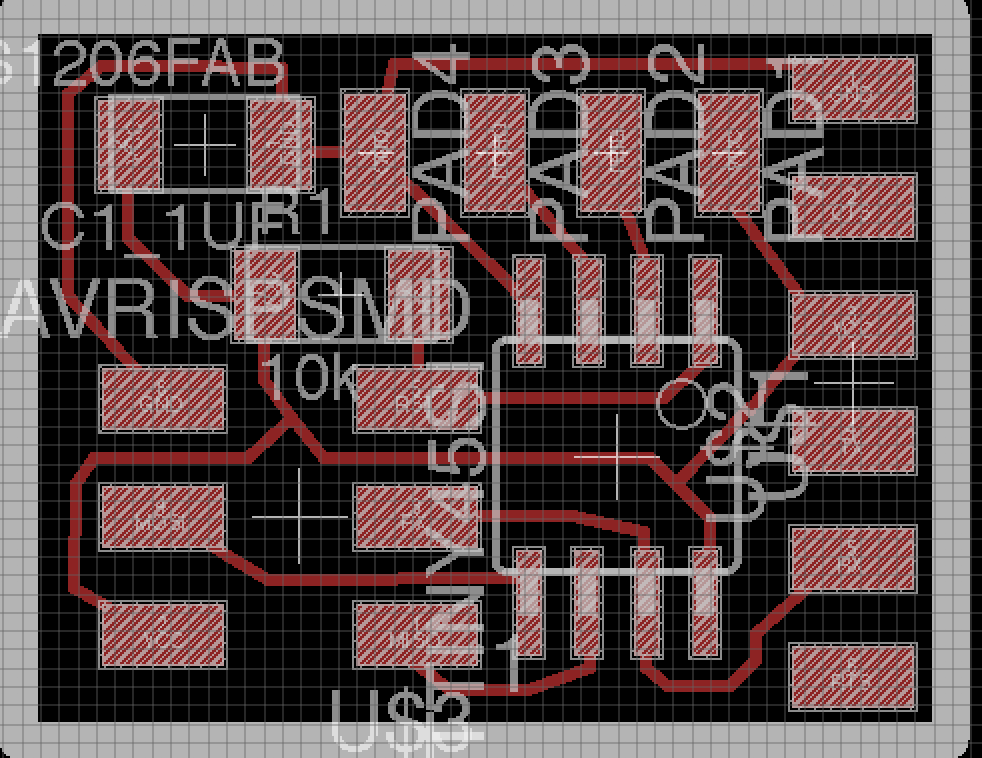
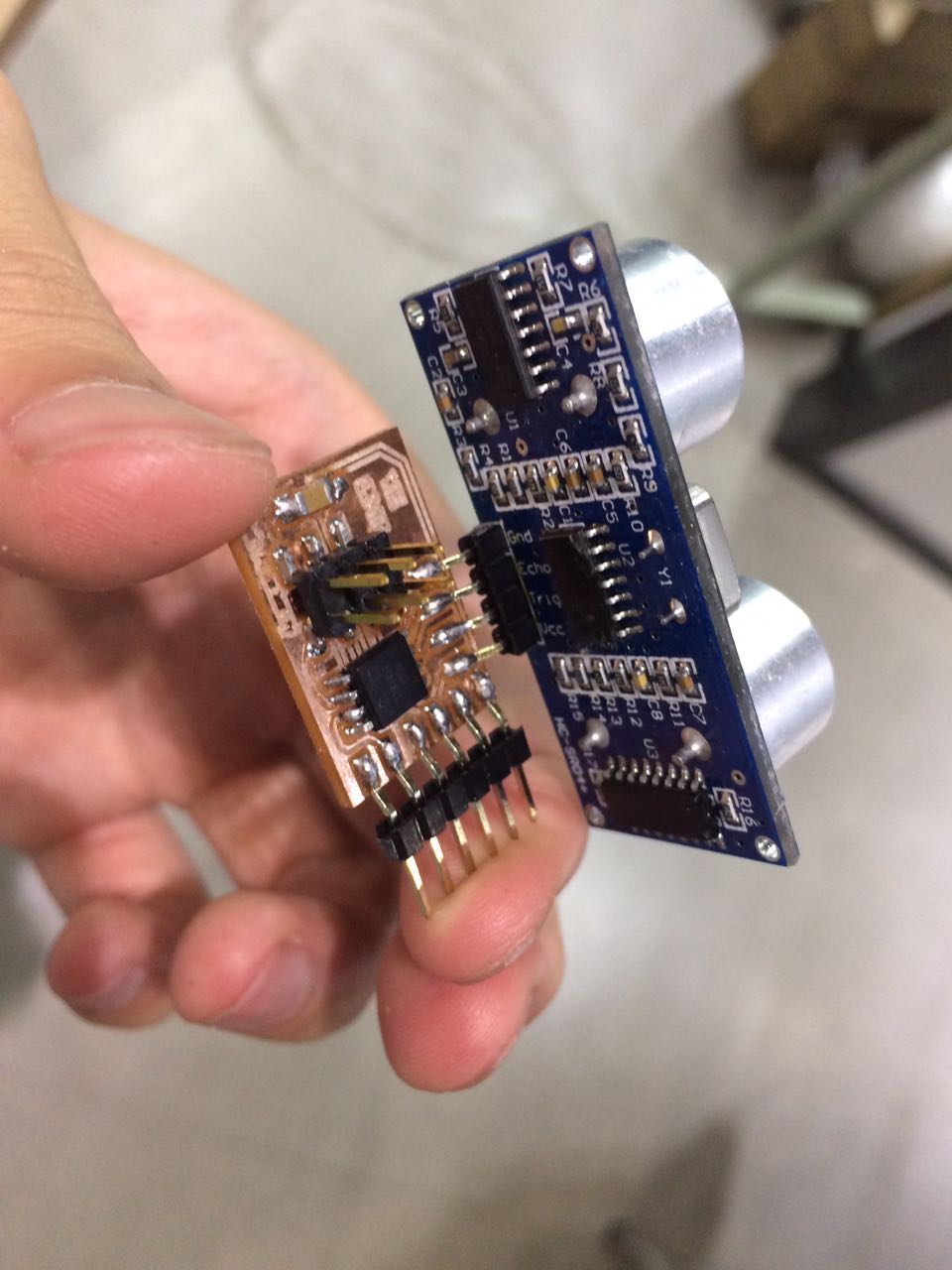
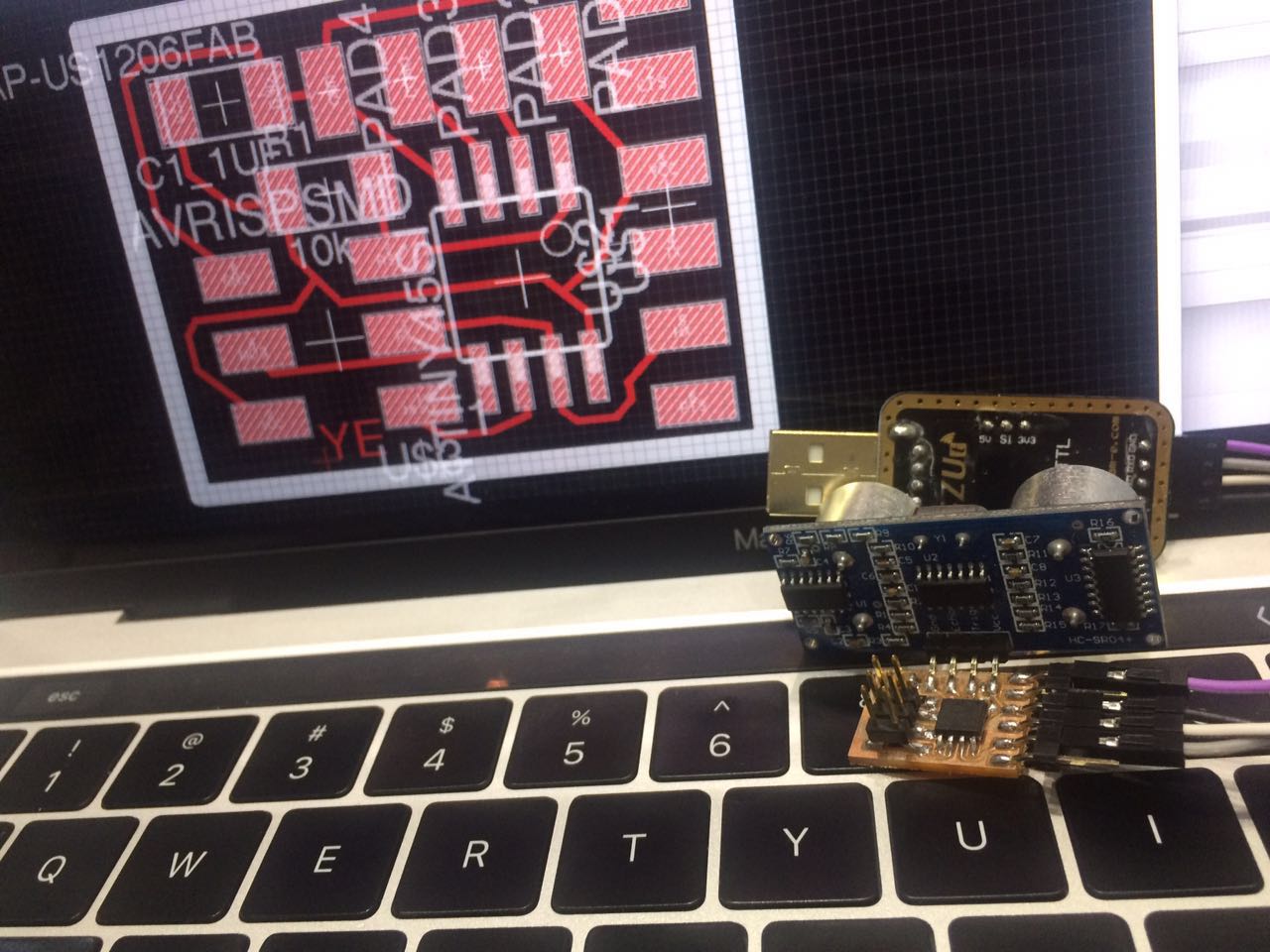
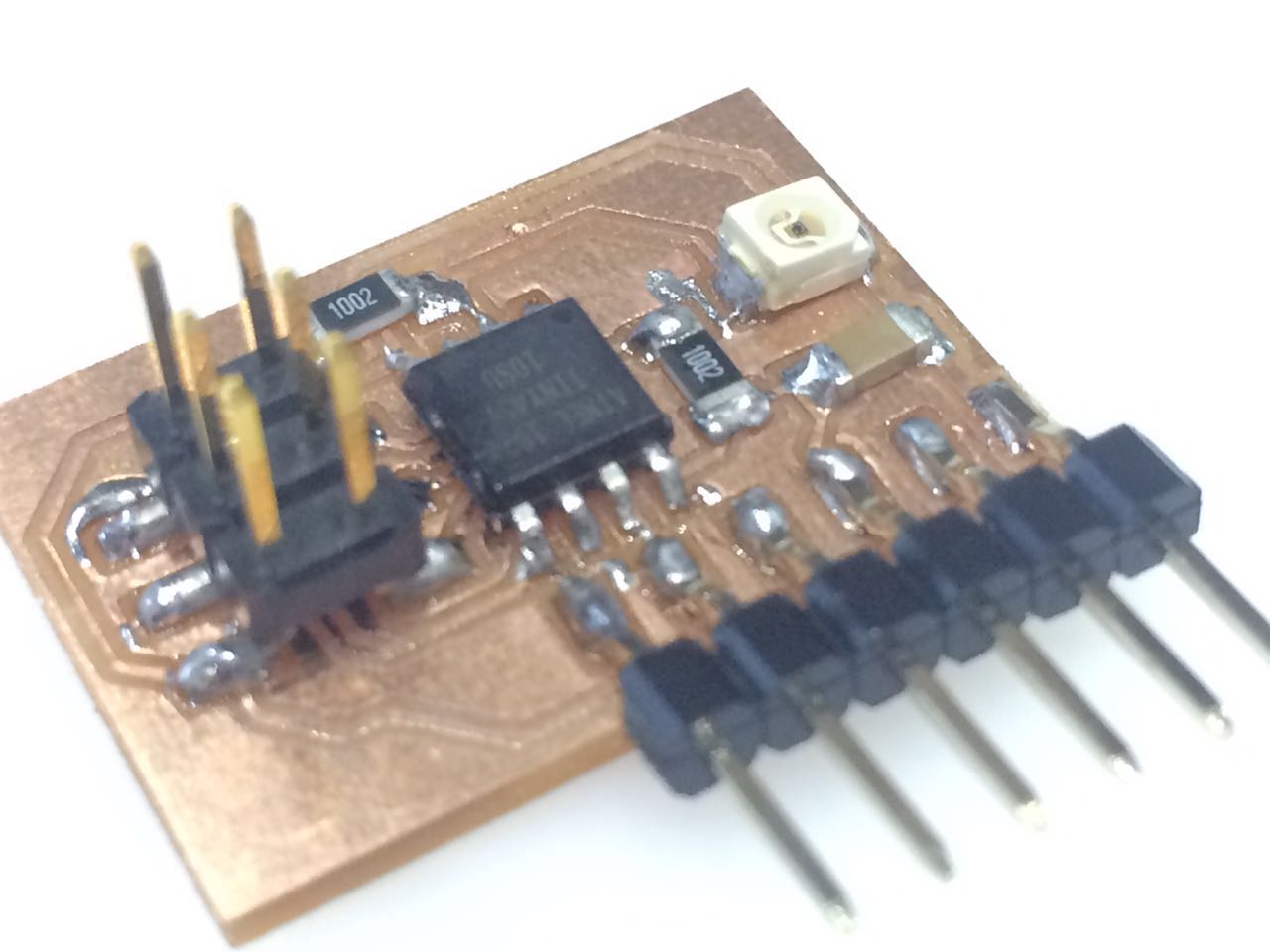
make the board out using Eagle
I used the distance board in shcedule as a reference
I added a Attiny45, a electric capacity, a resistance, a 2*3 jack, a 1*6 jack, a 1*4 jack and a distance mode in my board.
Here you see is what I design:
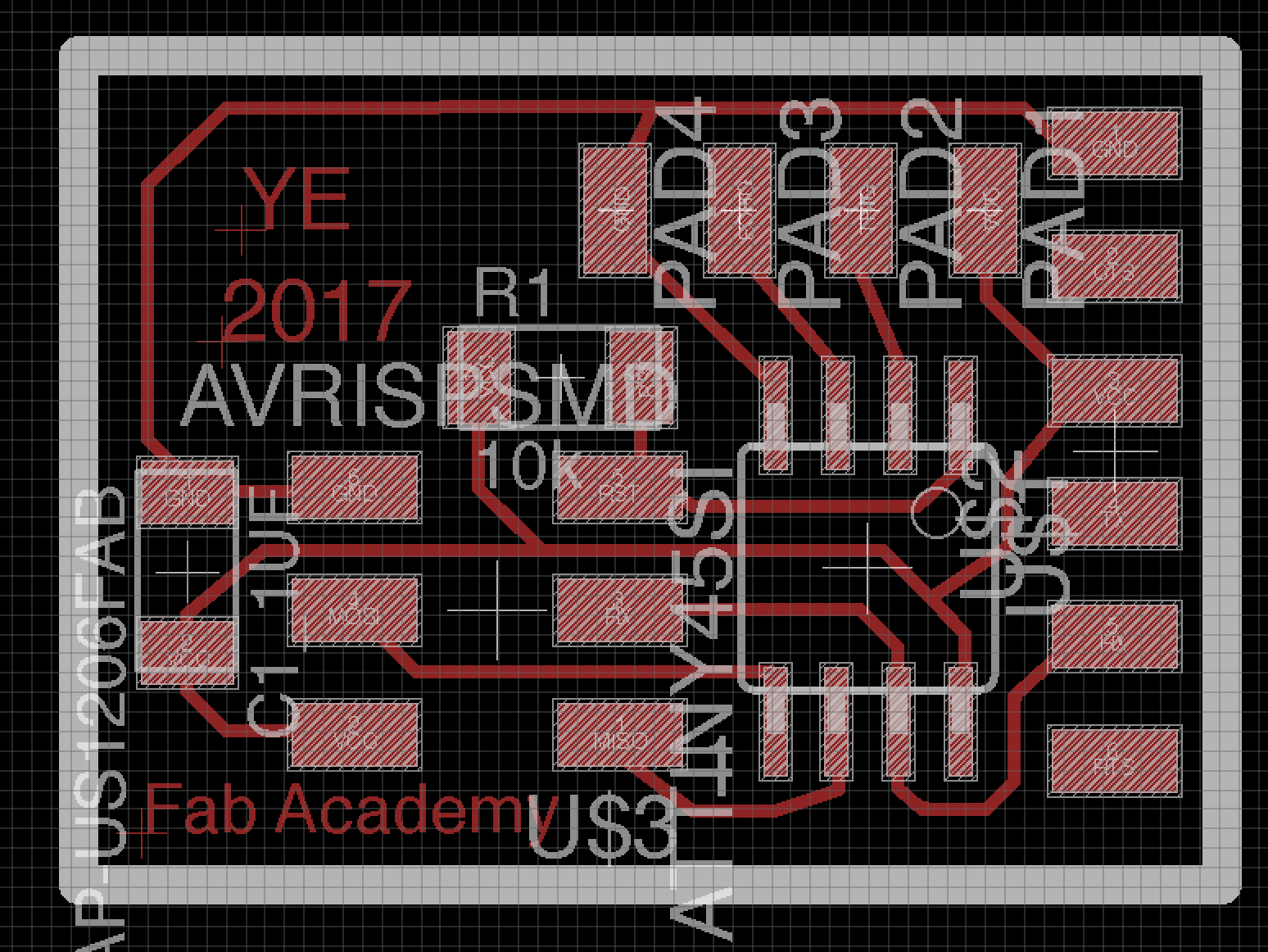

I designed two version of my board and both of them are really tiny! ( but it can be cutted out )
Get the second version - tiny version files!
cut the board out and solid the components
As usual, I used the Fabmodule to calculate and used SRM-20 machine to cut it out
Since it is really tiny of my board, it just took me less than 2 minutes to cut it out!
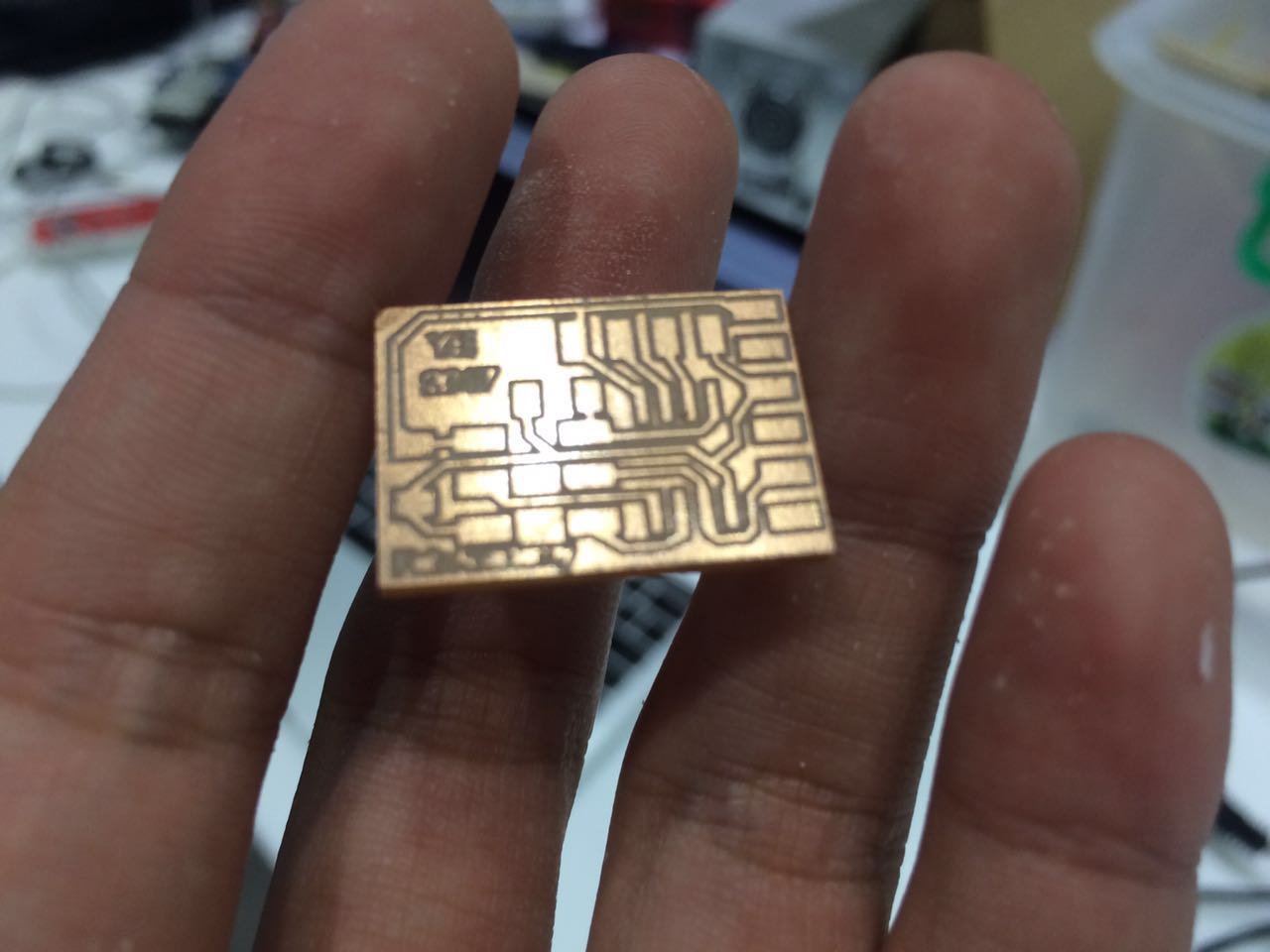
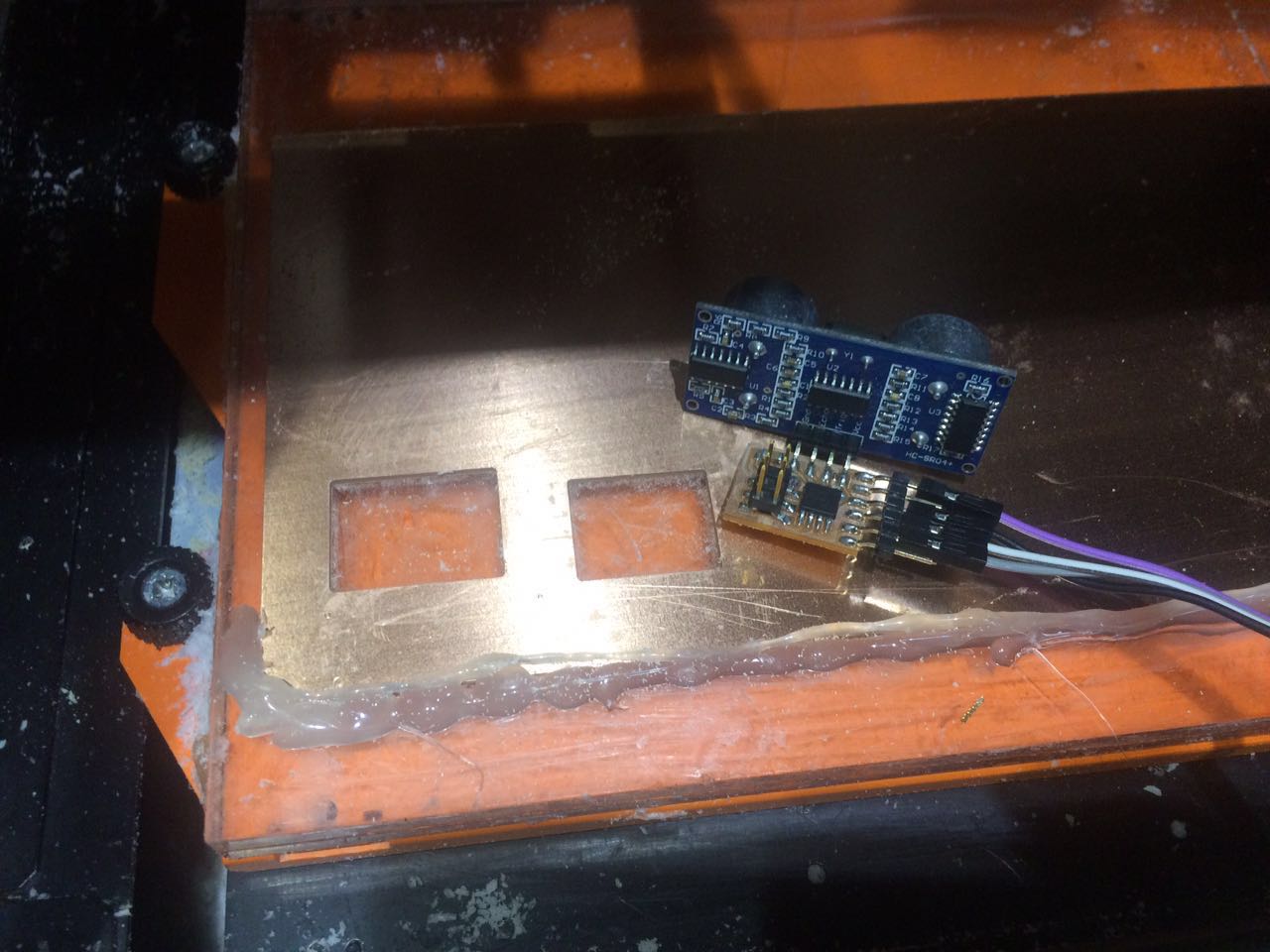
Then I solid the components to the board. It did not take me long time since I was skilled in it.
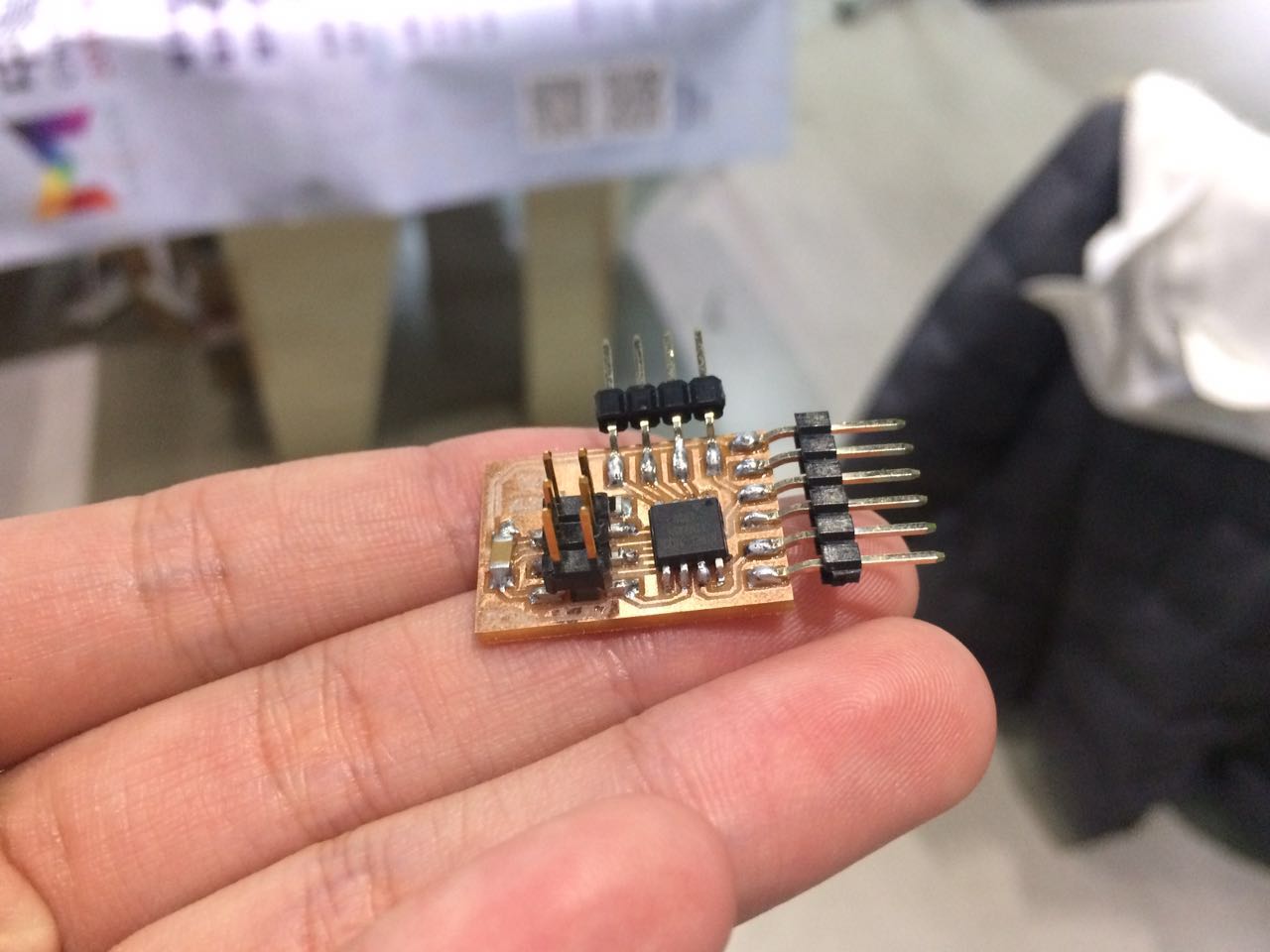
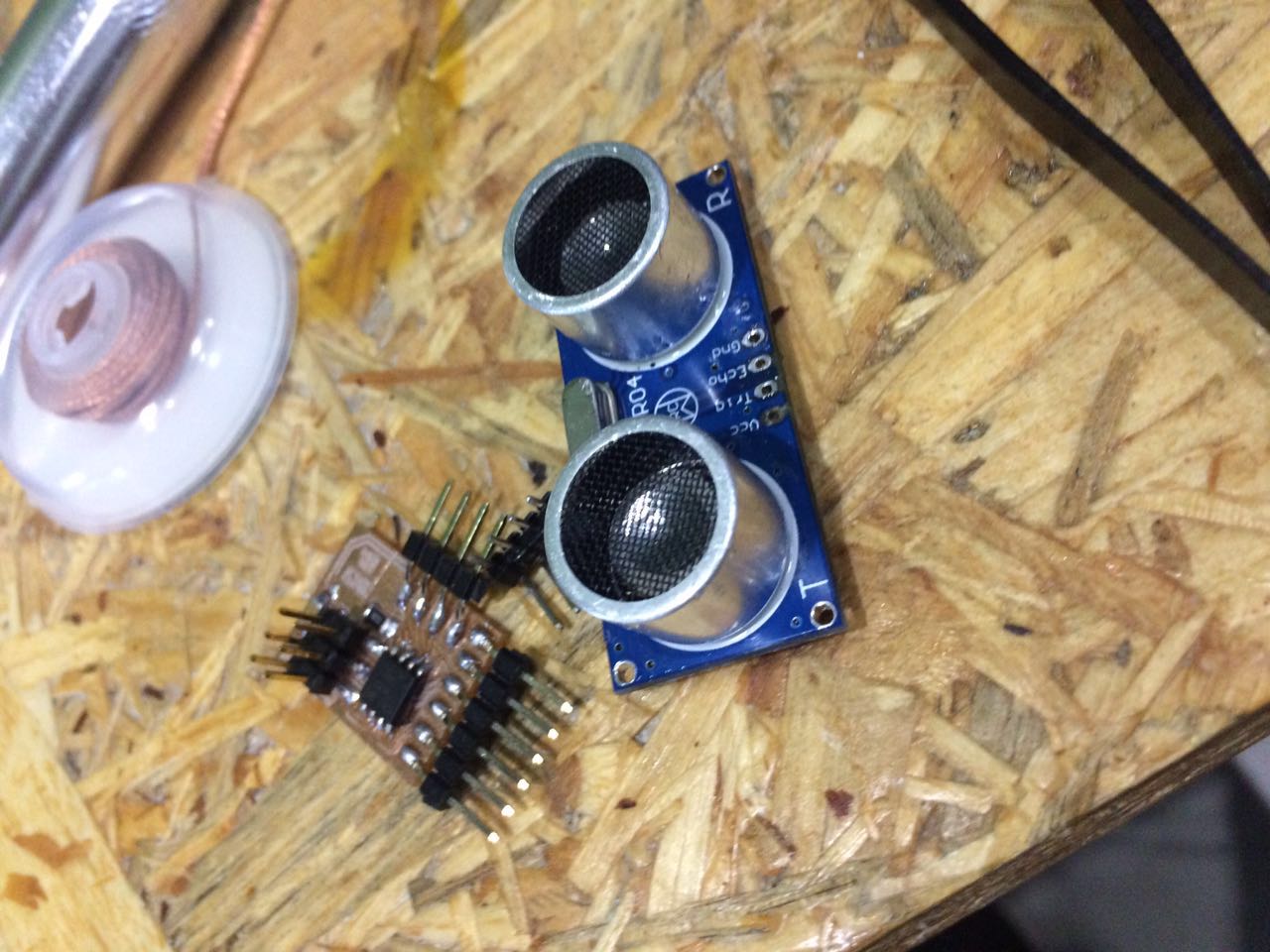
But the first time I failed to get the distance mode to the board - so I remade a board and success

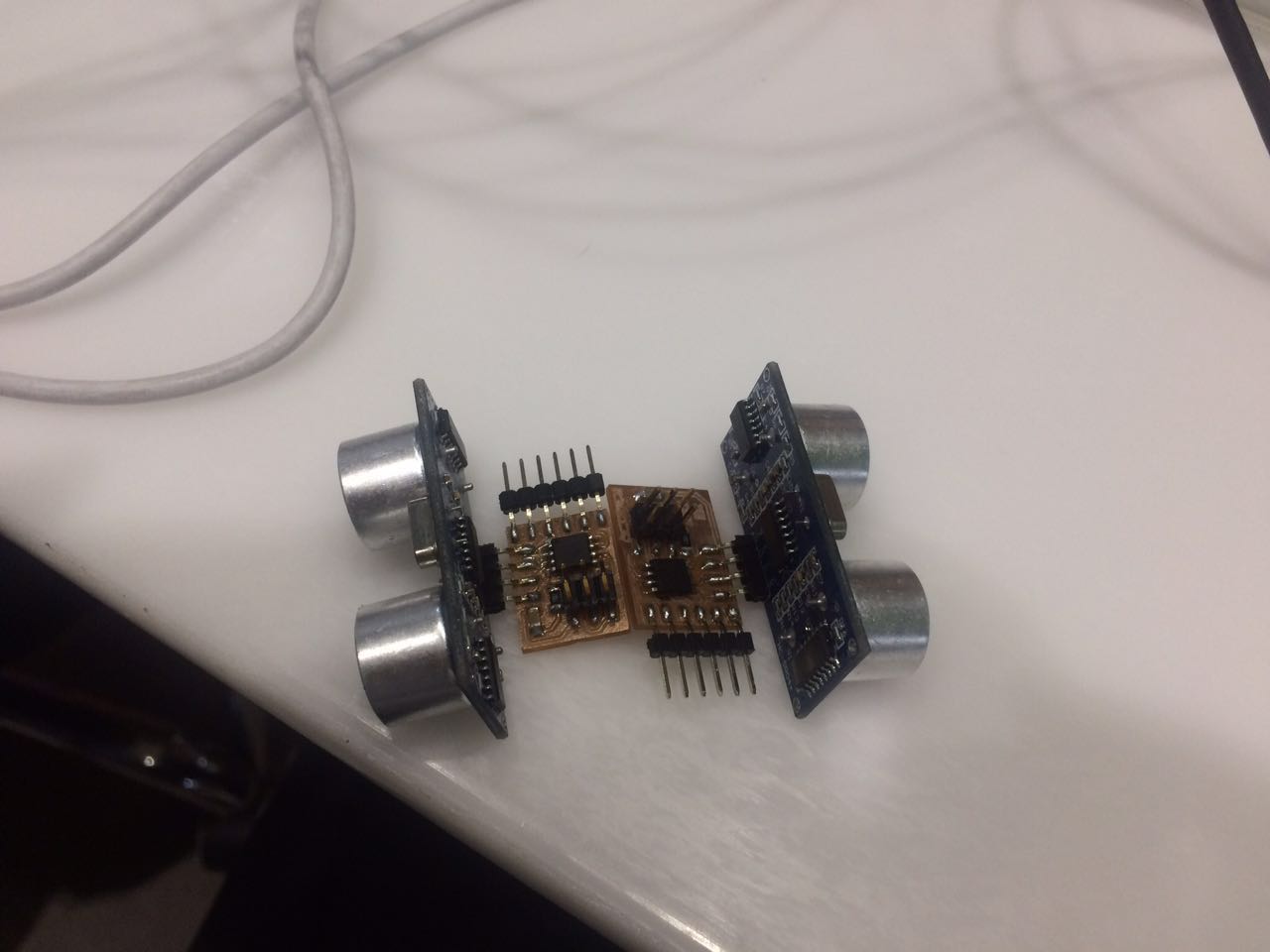
program the board and test the board
I used the program files in the schedule to program my board
And I used the FabISP as ISP ( since I couldn not find my fabisp out, I remade a FabISP. )
used the tutorial of how to program the board by using the c files
(I found that it should use the usbtiny to program the board as the code when using FabISP as ISP)
open the terminal on the computer and code:
then code:
And here I got:
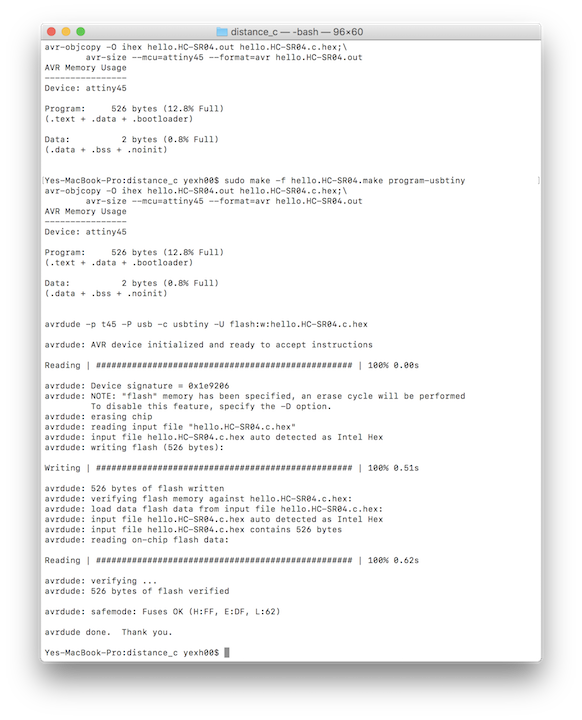
Then link the board to and then the computer.
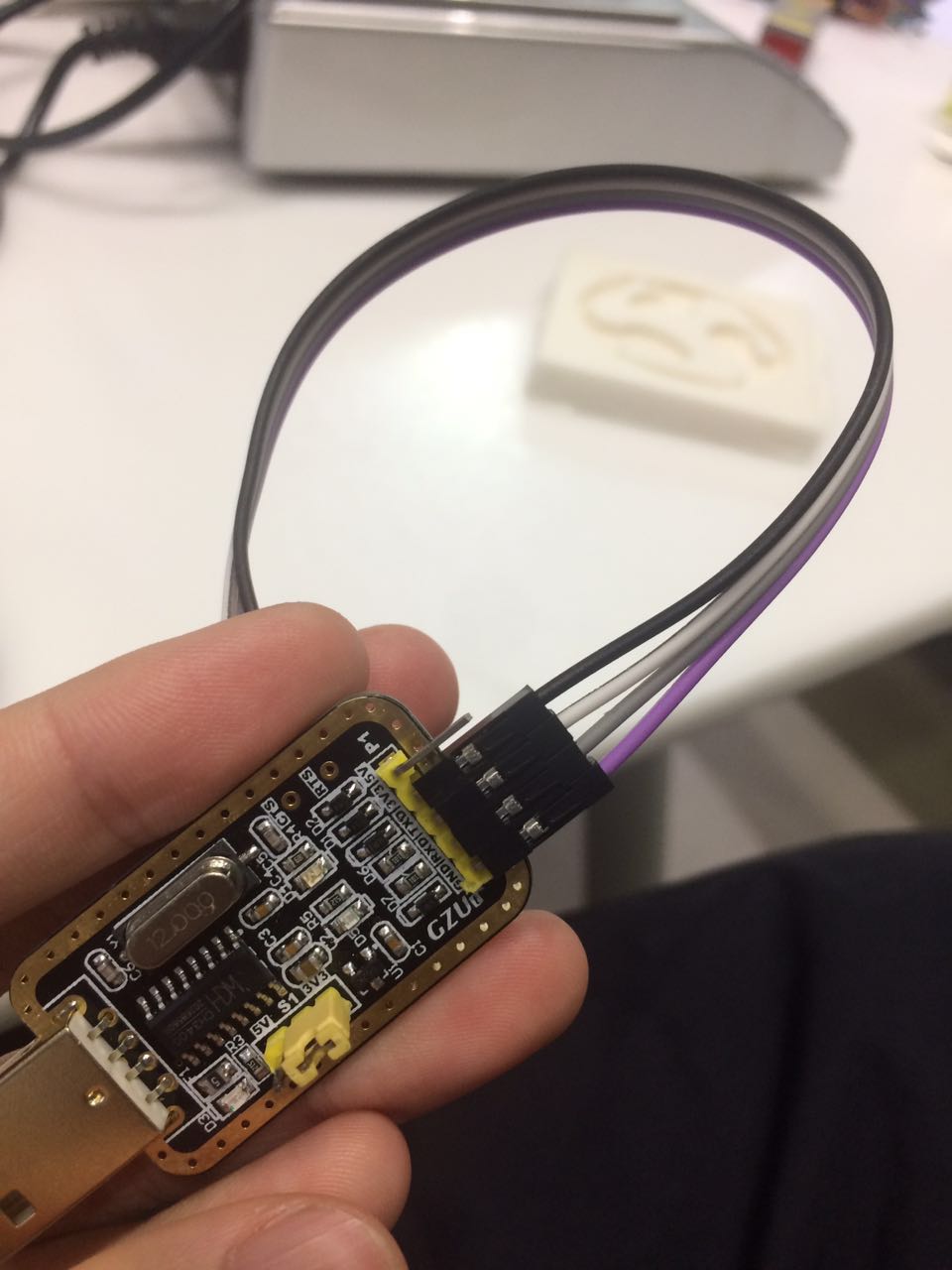
I tried several times : I remade the board and tried to use other methods like using arduino uno as the serial port
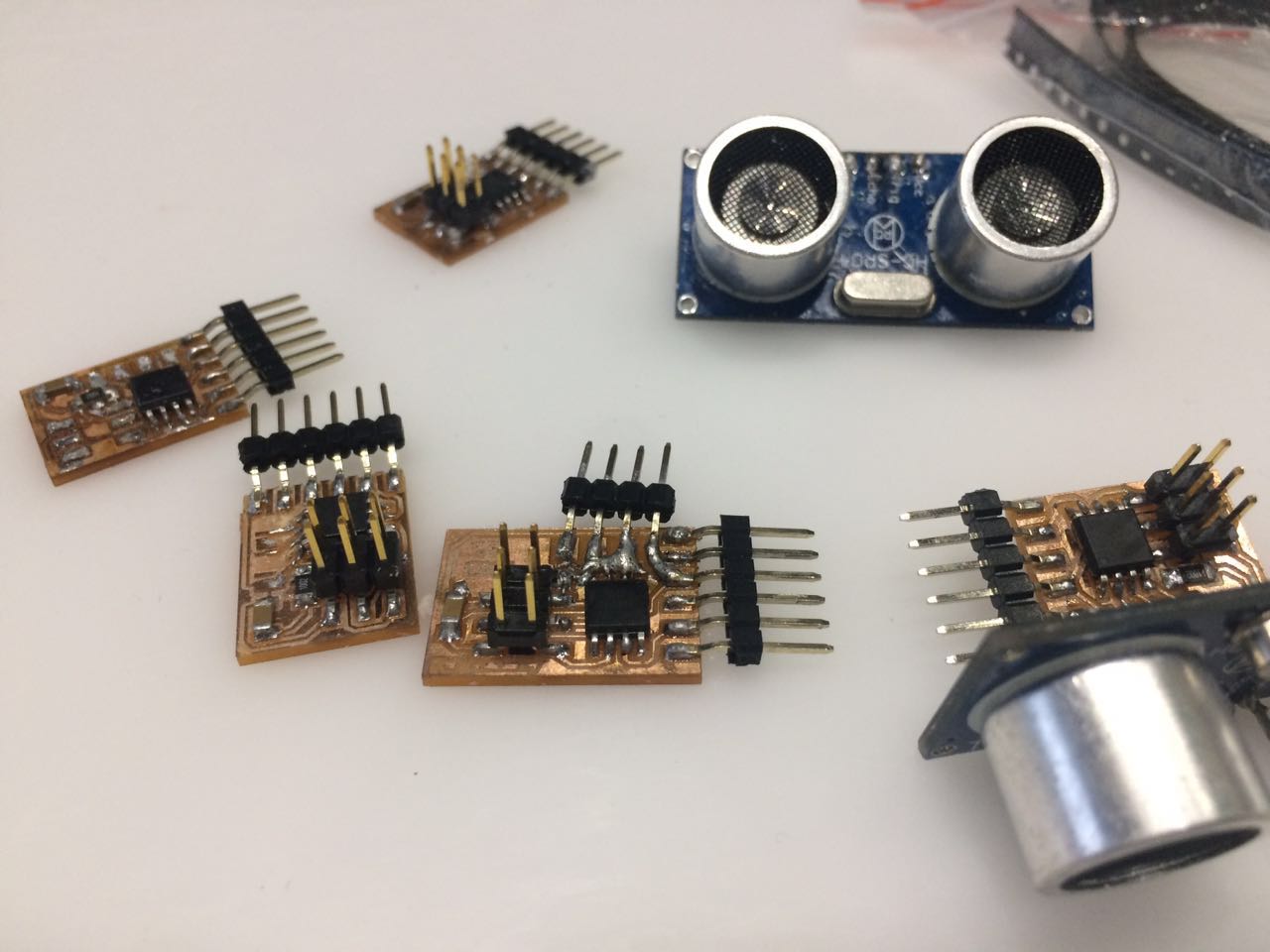
But I failed and here I got:
I have already tried several Baudrate like:9600, 57600, 115200 ...
Then I tried another input board: the light
Here is my design:

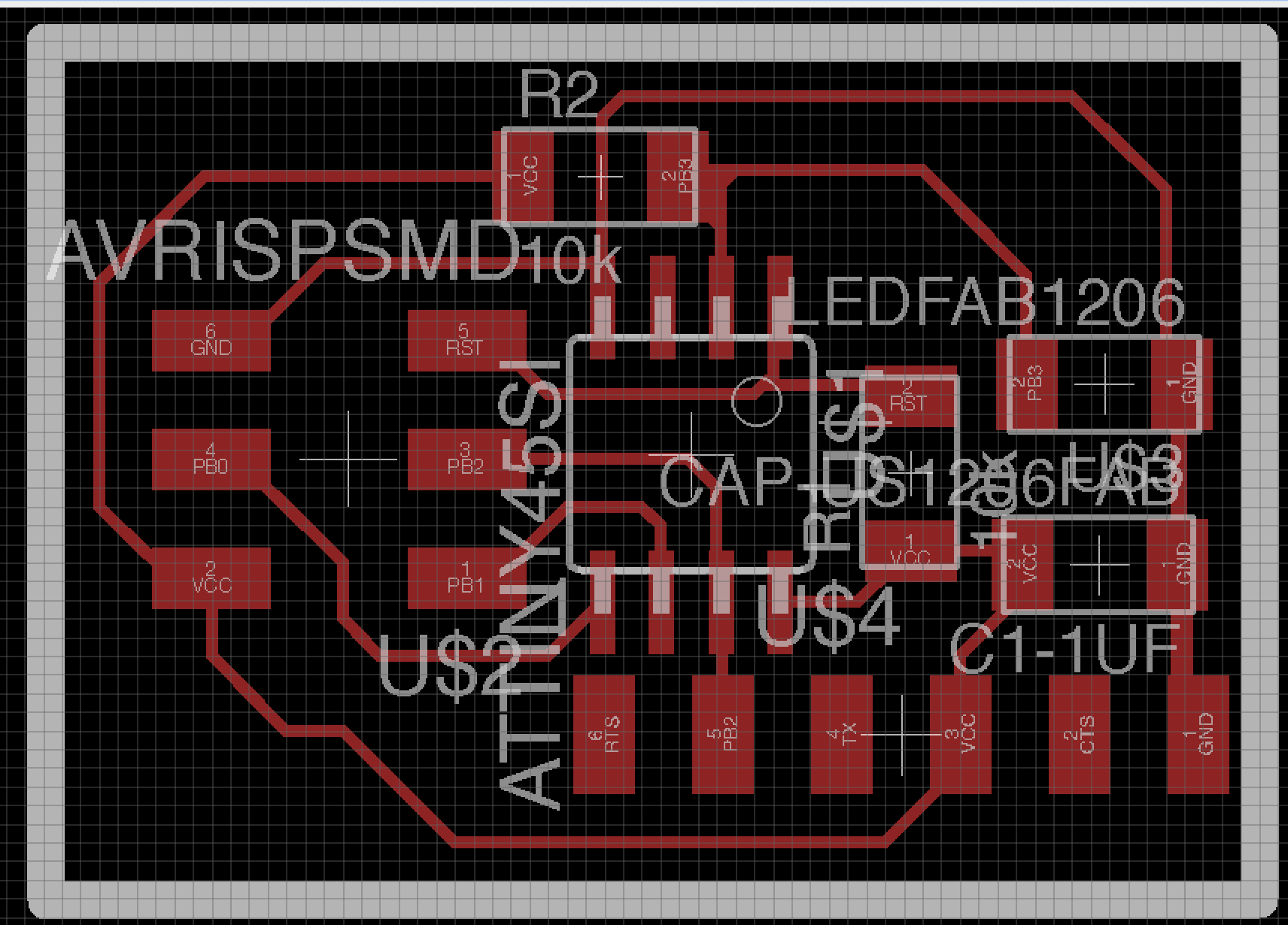
Get the code files(schedules' files)
Then I tested it again and failed
Then I think it may need the py file from schedule to get the serial information.
So I used the files from the schedule and code in the terminal:
python hello.light.45.py /dev/tty.usbserial-A50285BIBut I got:Traceback (most recent call last): File "hello.light.45.py", line 16, in <module> import serial ImportError: No module named serial
I search it in the google and I code:
pip install pyserial
After doing that, I retried and failed again.
I still can't work it out, maybe there are some problems with my serial ports -- my instructor used it to test the board he designed last year, which was working at that time, and met the same problems as I did.
fix the problem
After reading the Attiny44 data sheet, I found: the trig pin to Pin3 in arduino and echo pin to Pin4 in arduino
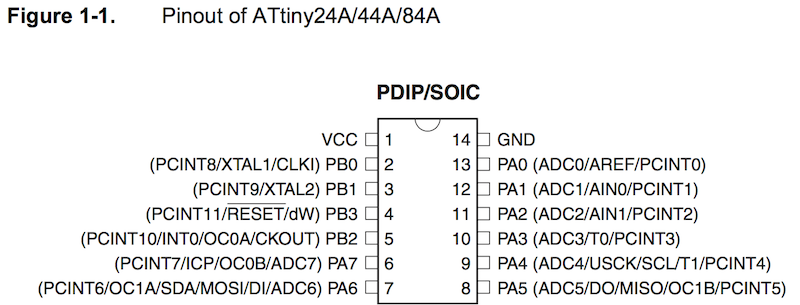
Tried so many times - took me 2 weeks, I finally used the Arduino code:
#include <SoftwareSerial.h>
SoftwareSerial mySerial (0,2);
int trig = 3;
int echo = 4;
long duration, distance ;
void setup() {
mySerial.begin(9600);
pinMode(trig, OUTPUT);
pinMode(echo, INPUT);
}
void loop() {
digitalWrite(trig, LOW);
delayMicroseconds(2);
digitalWrite(trig, HIGH);
delayMicroseconds(10);
digitalWrite(trig, LOW);
duration = pulseIn(echo,HIGH);
distance = duration / 58;
mySerial.print("The Distance is: ");
mySerial.println(distance);
delay(100);
}
And I connect my board with TTL to the arduino with 9600 bound and success:
After knowing how the arduino code work:
First, DigitalWrite trig to HIGH for x time and then DigitalWrite it to LOW
Then, Analize the Echo ( time )
Last, use the formula s = vt*0.5 to calculate it
And here is what I then code:
#include <SoftwareSerial.h>
SoftwareSerial mySerial (0,2);
long distance;
void setup() {
mySerial.begin(9600);
pinMode(3, OUTPUT);
pinMode(4, INPUT);
}
void loop() {
digitalWrite(3, LOW);
digitalWrite(3, HIGH);
delayMicroseconds(100);
digitalWrite(3, LOW);
distance = 0.343 * 0.5 * pulseIn(4,HIGH);
// s=vt (s = 1/2 * total s)
mySerial.println(distance);
mySerial.print("cm");
delay(1000);
}
